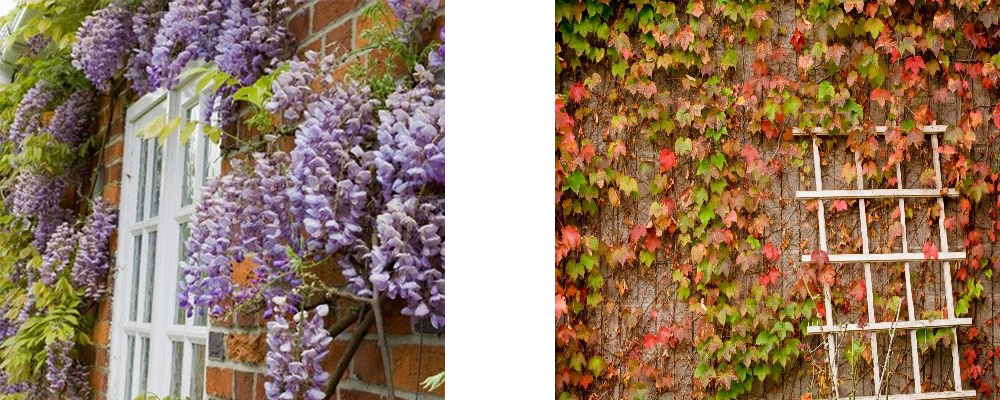Garden maintenance in a rented property - is your garden ready for winter?
In this article, Head of Dispute Resolution at mydeposits, Suzy Hershman, offers advice on garden maintenance in a rented property, focusing on preparing the garden for winter and what to bear in mind if your tenant is moving out during the autumn/winter months.
Although the landlord must make sure that a rental property is safe and remains in good condition throughout the tenancy, tenants are responsible for taking reasonable steps to look after the property while they are living there.
A tenant is always responsible for returning the property in the same condition and cleaned to the same standard as it was at the start, and this includes the front and rear garden (maybe both). Where a garden is part of the property and is the tenant’s responsibility, it will need to be returned looking similar to how it was at the start – as we all know, a garden is always growing, so this should allow for seasonal growth. Landlords also need to appreciate that not all garden jobs are the tenant’s responsibility.
Protect your deposit today
If you have taken a cash deposit, you must protect it in a government authorised scheme within 30 calendar days
What does your tenancy agreement’s garden maintenance clause say? Is it clear?
During a tenancy, the basic upkeep of the garden is usually a tenant’s responsibility, but does the garden maintenance clause in your tenancy agreement list out which parts of the garden they are responsible for? These will generally include mowing the lawn, keeping flower beds and paths weed-free, maintaining any low growing shrubs and disposing of any rubbish.
So, once autumn arrives and the leaves fall, summer bedding dies and the lawn continues to grow before the frosts begin, there are lots of tips you can offer your tenant, if they are not ‘green-fingered’ gardeners at heart (or want to pay a gardener)!
First things first! Preparing the garden for winter
- Remove old flowers and damaged, dying growth including any summer bedding (‘annuals’ which will not return next year can be removed completely)
- Cut, prune and reshape shrubs before any new growth begins
- Keep lawn mowed, until the cold weather and frosts slow the growth down or it is too wet
- Use weed control on any paths
- Sweep leaves with all the other garden rubbish and dispose of appropriately
- Families should be reminded that leaving toys on the grass over the winter can also cause damage
What garden maintenance is it unreasonable to expect a tenant to do?
Reasonableness must be applied when it comes to larger maintenance jobs such as cutting back trees or climbing shrubs, which a tenant should not be expected to do. Such work is likely to require a professional, or at the very least a ladder, and since it would be unreasonable to expect this from the tenant these larger maintenance tasks fall under the landlord’s responsibility. Maintaining these tasks annually, ready for winter, is the best way for a landlord to make sure the garden does not get out of hand.
With shrubs, consider if they were at a low level when the tenant moved in and whether they should have reported that they had grown out of control before negotiating any costs. Good examples of this are wisteria and ivy, which both grow quickly every year from springtime onwards.

Greenhouses, sheds and fences all deteriorate over time just from the impact of seasonal weather so if these are part of the property, they will not be the tenants’ responsibility unless they have been damaged due to tenant misuse. This can be checked as part of a periodic inspection and if any repairs are needed these can be organised by the landlord. It’s worth remembering the gutters too, which can often be blocked by leaves and are the landlord’s responsibility.
If tenants are moving out during autumn/winter months, it’s important to be aware of how the garden was given to them at the start of their tenancy and to be reasonable about what to expect, particularly if they are moving out at a different time of the year. There are always seasonal differences in a garden’s appearance and these should be considered.
What is seasonal order?
Spring and summer months are the growth season; bulbs will flower, shrubs will bloom and fill out and the leaves will appear on the trees. In the autumn and winter, the flowers die back, leaves change colour and many will drop – this is the ‘tidying up’ season.
The key question to ask is, what time of year did the tenant move in? As this may account for any differences being highlighted at check-out, and whether they are reasonable. Another question to ask is, has the tenant maintained the garden as much as possible given the time of year? While seasonal order relates to the growing parts of a garden, fair wear and tear will apply to the fixtures and features in the garden such as fencing, sheds, paving and gates.
Managing garden maintenance expectations
Many landlords find it best to keep gardens simple, with nothing that requires a lot of maintenance, as most tenants are not gardeners! Should you provide tenants with basic gardening tools to help maintain the garden is an age-old question to which there is no right or wrong answer.
Periodic inspections will highlight any on-going issues. What everyone wants to do is avoid any problems once the tenancy ends, so if a tenant is moving out during the autumn/winter months you can remind them of their responsibility within plenty of time of their move out date. Best practice is for a landlord/agent to carry out a pre-checkout inspection.
For more advice on how to manage garden maintenance in a rental property, read Total Landlord’s guide.